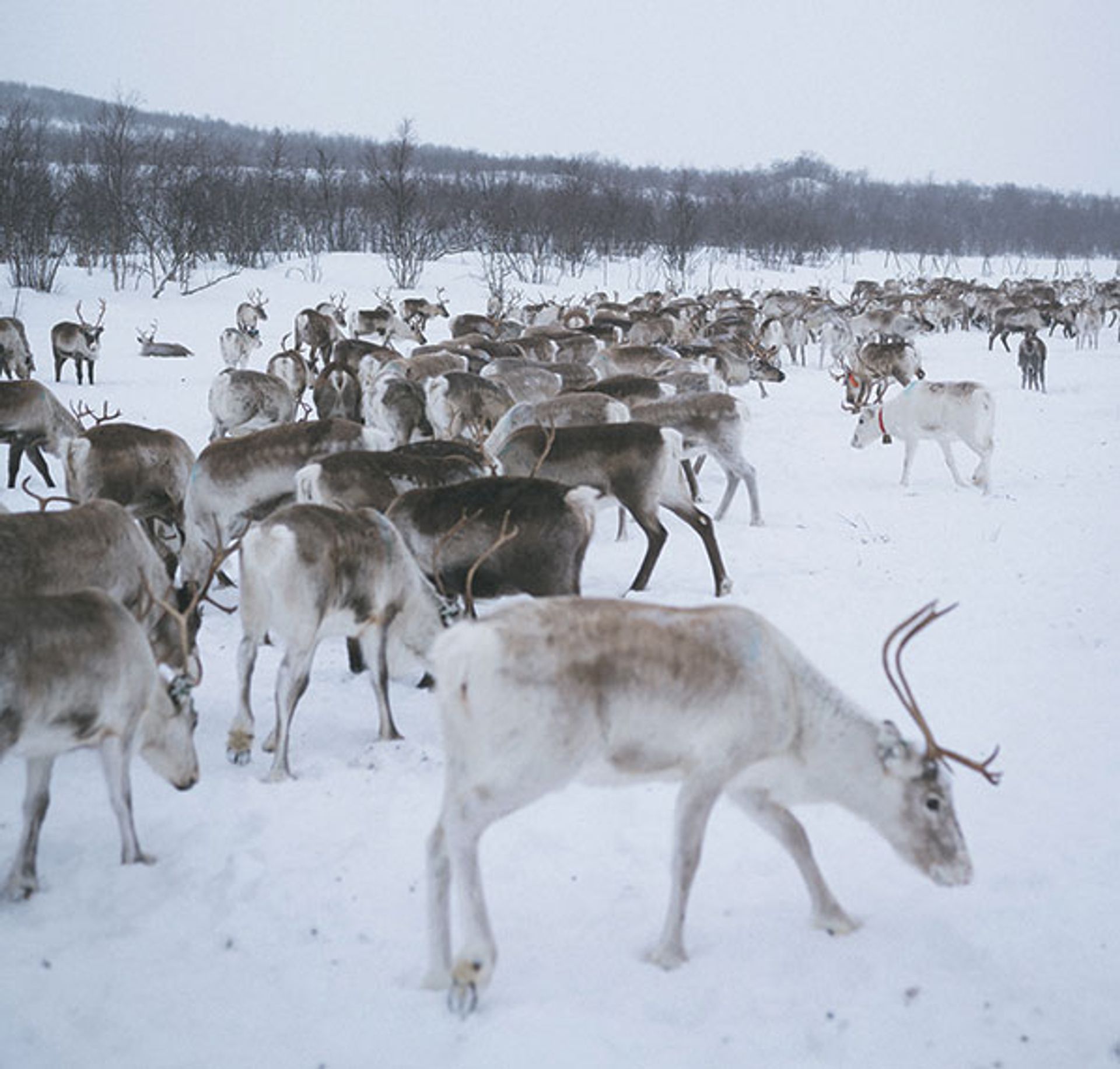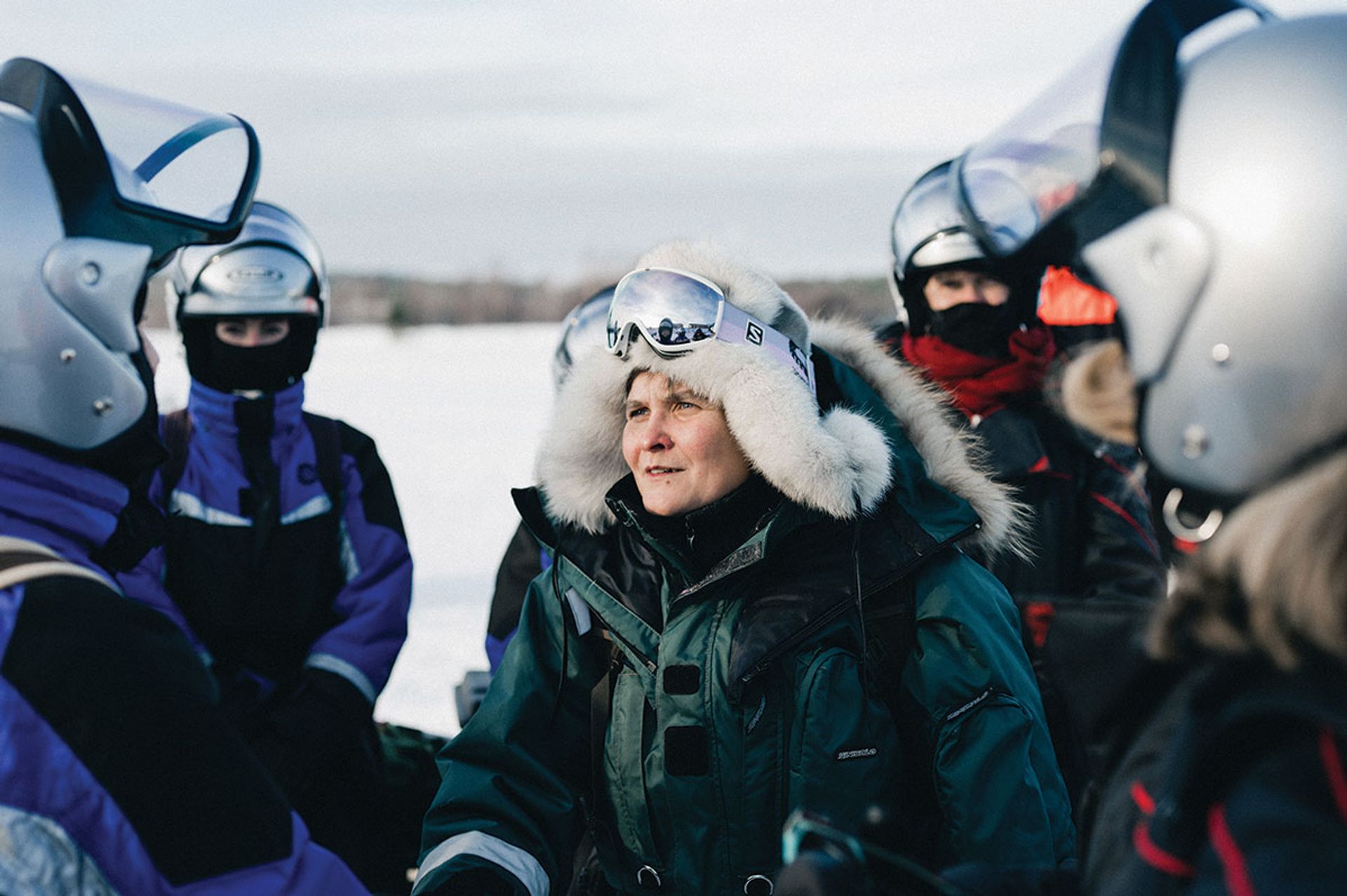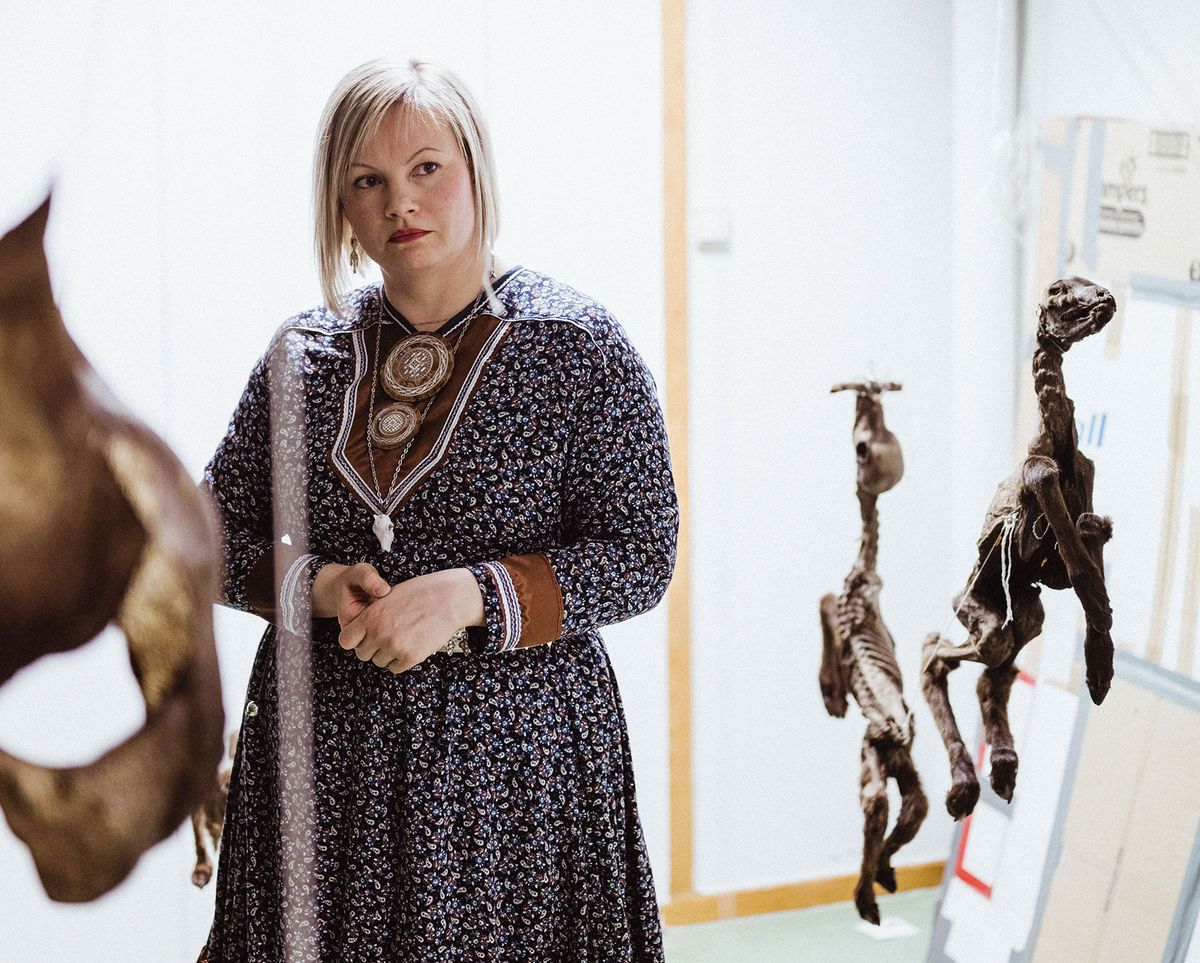When the first Venice Biennale took place in 1895, nationalism was riding high in Europe and colonial empires were still being built. Emulating the world’s fairs of the 19th century, the Biennale grounds were divided among national pavilions. Even today, a cadre of mostly Western countries hold permanent positions in the Giardini, while newcomers must seek temporary homes elsewhere. Shows are commissioned by government bodies and artists are said to “represent” their country.
This year, the three artists selected to show in the Nordic pavilion—shared since 1962 by the three countries of Norway, Sweden and Finland—are staking a claim for an alternative “sovereignty”. The airy concrete space designed by the Norwegian architect Sverre Fehn is being renamed the Sámi pavilion, after the estimated 80,000 Indigenous people who live across Europe’s Arctic region. Living and working on different sides of the Nordic national borders, the artists Pauliina Feodoroff, Máret Ánne Sara and Anders Sunna are all Sámi, and have dedicated themselves to “defending Sámi perspectives”, says the pavilion’s commissioner and co-curator, Katya García-Antón.

The three Sámi pavilion artists Máret Ánne Sara, Anders Sunna and Pauliina Feodoroff Photo: Marta Buso, OCA
She describes the Sámi pavilion project as the culmination of an eight-year “decolonial journey” undertaken by her own organisation, the Office for Contemporary Art Norway (OCA), since she became director in 2014. Funded by the Norwegian ministries of culture and foreign affairs, it has a mission to support and promote Norway-based artists internationally. Under García-Antón’s leadership, it has extended that mission to Sápmi, the name used by Sámi people for their homelands.
“Our institution was the same as so many others, that had never really bothered to build up knowledge and build a connection,” she says. It started to do that through a series of visits to Sámi artists, scholars and community leaders in the far north. That “relationship and trust” paved the way for various projects foregrounding Sámi art and culture, and led to the inclusion of eight Sámi artists—including Máret Ánne Sara—in the Documenta 14 exhibitions in Athens and Kassel. For a Nordic art scene that had long overlooked Sámi practitioners, Documenta came as a “shock” and a “wake-up call”, García-Antón recalls.
Legal battles
In Kassel, Sara presented an installation that was calculated to shock: Pile o’ Sápmi, a curtain of reindeer skulls. This formed part of her multi-year campaign to call attention to her brother’s court battle with the state of Norway. A young reindeer herder, he contested the government’s fixed quota on the culling of reindeer—a legal requirement that spelled bankruptcy and the loss of an age-old Sámi livelihood for him and his peers. Three trials, ending in defeat at the Supreme Court in Oslo, set off a “dramatic crisis” in the family and the wider Sámi reindeer herding community, Sara says.

A Sámi reindeer herd Michael Miller, OCA
She describes Pile o’ Sápmi as her “artistic trial” against the authorities that were culling Sámi reindeer while developing industry on ancestral lands, disrupting their migration routes. The work sought to expose Norway’s “ongoing structural colonisation and how it operates invisibly in the light of day”, she says, decades after the official end of its brutal state policy to assimilate the Sámi.
For Sara, a former journalist and novelist, art was “the best language to create a broad and a lasting debate” around her brother’s case and to “reclaim reality from our perspective”. And in the aftermath of the crushing Supreme Court verdict, it became a way to “manifest hope” again. That shift is reflected in her sculptural installation for Venice, which centres on the bodies of reindeer calves as symbols of rebirth, and on reindeer stomachs—evoking the importance of “gut feeling” and other forms of non-verbal communication.
Issues of reindeer herding rights and injustice recur in the cycle of six narrative paintings made by Anders Sunna, depicting his own family’s 50-year struggle to maintain their herding livelihood in the face of draconian legislation. Each canvas is dedicated to a decade’s worth of legal challenges against the Swedish authorities, as the Sunna family resisted state attempts to remove their herds and registered reindeer earmarks. When Sunna was a child, “our family had 300 to 400 police notifications on us”, he says. Almost all of their “30 or 40” court cases ended in defeat. The reams of legal documents will now be displayed and made accessible to visitors in the Sámi pavilion, while a parallel soundscape will incorporate audio recordings from the courtrooms.
The installation is the result of a collective effort, as Sunna’s brothers and uncles helped to build the cabinets that will encase the paintings and his children photocopied the papers. “This is our family’s biggest opportunity to get [our story] out and maybe change something,” he says. Despite the toll of a marathon legal conflict, they have found a kind of “mental relief” through his protest-fuelled art, he adds. “It was easier to live when we started to have this voice.”
Sara’s and Sunna’s works are testament to Sámi society’s cultural and spiritual connection with reindeer and its broader sense of kinship with the natural world. The notion that “what happens to the land happens to the people” is common to all three Sámi pavilion artists, García-Antón says. In Venice, that message will be most explicit in the work of Pauliina Feodoroff, a theatre director and land guardian in the Finnish part of Sápmi. She has combined creative practice with environmental and political activism through projects such as the play CO2lonialNATION, imagining a Nordic truth and reconciliation process, and the restoration of river systems with the Snowchange Cooperative, a community-led non-profit addressing climate change in the Arctic.

Theatre director and activist Pauliina Feodoroff, whose work is concerned with protecting fragile forests from intensive logging Michael Miller, OCA
Feodoroff is currently engaged in a bid to protect fragile old-growth forests from intensive industrial logging, a cause she hopes to amplify using the “megaphone” of the Biennale. A series of video views of endangered forest landscapes will be displayed and later offered for auction as part of an unusual deal. Collectors and institutions can acquire the rights to view and visit the land, which Feodoroff and her collaborators will buy using the proceeds, in order to protect it.
Collective strength
A mock auction of landscapes will also be performed live in the pavilion by Feodoroff and a group of female dancers. A meditation on the violence of colonial encounters, the performance suggests the possibility of purging colonised bodies through women’s collective strength.
Feodoroff admits she is “terrified” of the art-world stage that is the Biennale, but she anticipates that the spotlight will have real and positive consequences in Sápmi. Referring to the latest stark report issued by the Intergovernmental Panel on Climate Change, she says: “If I keep [my work] local, these lands won’t be protected on the scale that they need.”
Ultimately, the fundraising drive for the forests is a fight for the future of a “living entity” that co-existed with Sámi people for centuries before the arrival of Nordic industry. “We would feel such shame to let [our ancestors] down, to be the ones who were the last,” Feodoroff says.
Sámi
Artists: Pauliina Feodoroff, Máret Ánne Sara and Anders Sunna
Organisers: Katya García-Antón, Liisa-Rávná Finbog and Beaska Niillas; Office for Contemporary Art Norway
Where: Nordic pavilion, Giardini


